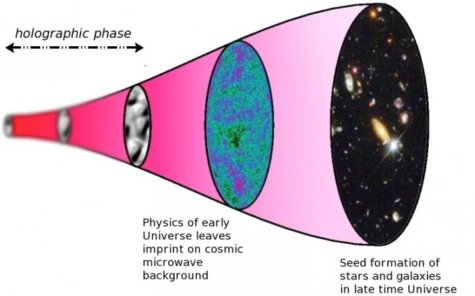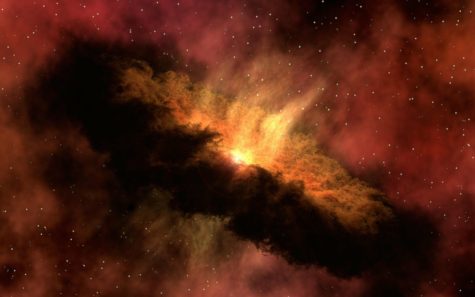WATERLOO, Ontario — Are we the product of a hologram? Research shows that our universe may have been two-dimensional before the Big Bang reorganized life as we know it.
Published in the the journal Physical Review Letter, the study details a stunning theory that can compromise one’s existential stability. Scientists from England, Canada and Italy are more convinced that our universe, and everything in it, may be a result of holographic manifestation.

Kostas Skenderis, one of the authors of the research, compares the theory to something that we’re all familiar with: a credit card.
“Imagine that everything you see, feel and hear in three dimensions (and your perception of time) in fact emanates from a flat two-dimensional field,” explains Skenderis, a professor of mathematical sciences at the University of Southampton, in a media release. “The idea is similar to that of ordinary holograms where a three-dimensional image is encoded in a two-dimensional surface, such as in the hologram on a credit card. However, this time, the entire universe is encoded!”
‘Simplest theory of the early universe’
The group examined measurements that were gathered by the Planck telescope, which was capable of mapping out cosmic microwave background radiation that still lingers as result of the Big Bang. Skenderis says that the team conducted the research based on the youngest stages of the universe.
Two of the most widely accepted concepts in the science community, quantum mechanics and general relativity, happen to be very contradictory to one another in representing the nature of our universe. By theorizing the removal of a one of the spatial dimensions, the two theories are more acquiescent.
“Holography is a huge leap forward in the way we think about the structure and creation of the universe. Einstein’s theory of general relativity explains almost everything large scale in the universe very well, but starts to unravel when examining its origins and mechanisms at quantum level,” says Skenderis. “Scientists have been working for decades to combine Einstein’s theory of gravity and quantum theory. Some believe the concept of a holographic universe has the potential to reconcile the two. I hope our research takes us another step towards this.”
Niayesh Afshordi, the lead author of the published analysis, would take this theory to the bank.
“I would argue that this is the simplest theory of the early universe. And so far, this is as simple as it gets,” he told CBC News. But don’t have a complete existential meltdown. Afshordi reassured us by letting us know we’re probably still real. “As far as you’re concerned, you do exist”.

” I think, therefore I am.”